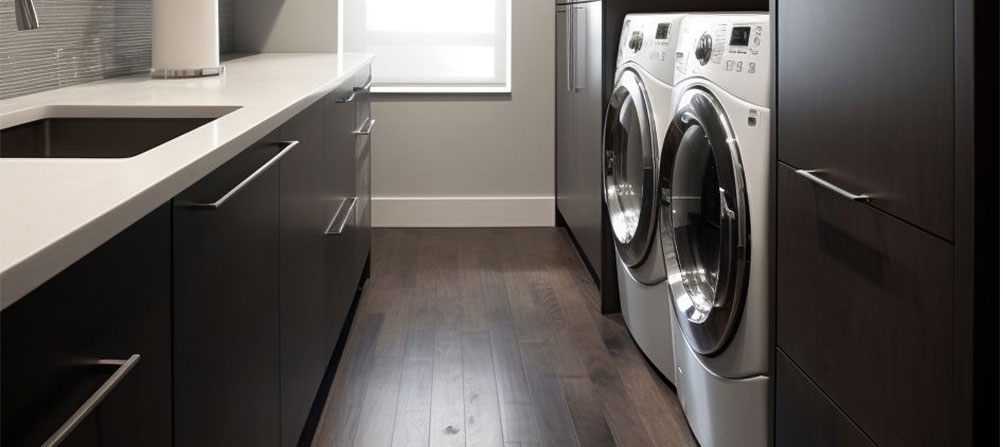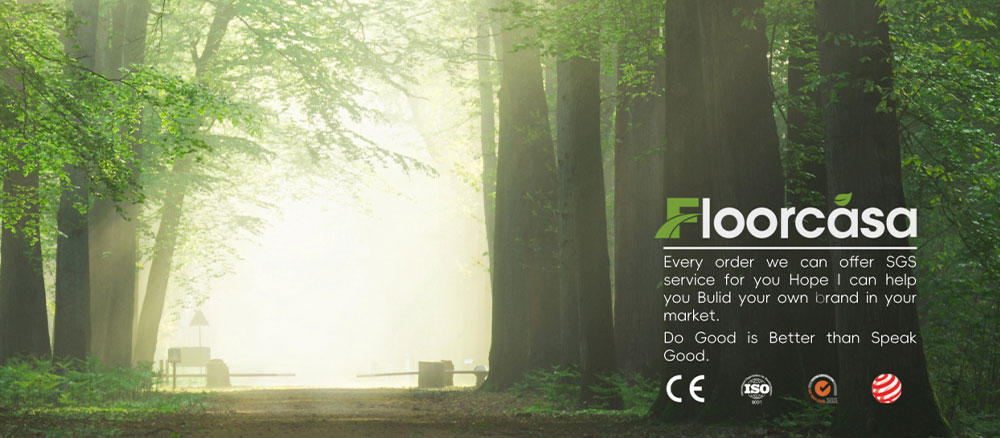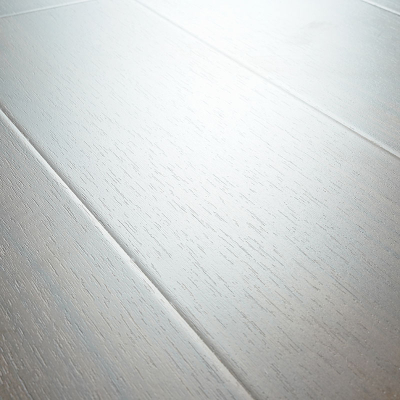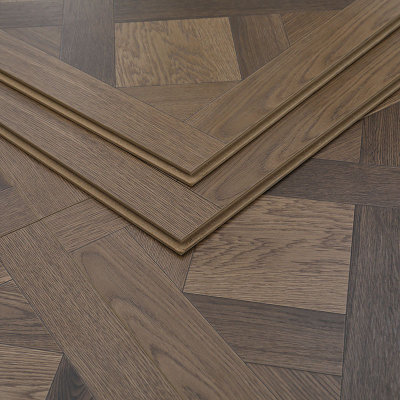Waterproof Floors Revolutionize Bathroom Design | FLOORMAKER
As homeowners increasingly prioritize durability and aesthetics in bathroom renovations, Floormaker, a leader in innovative flooring solutions, is stepping into the spotlight with its advanced line of 100% waterproof flooring designed specifically for high-moisture environments. Combining sleek design, unmatched resilience, and eco-conscious engineering, Floormaker's waterproof flooring for bathroom products redefine the combination of form and function in modern interior design.
Why Waterproof Flooring Matters
Bathrooms are ground zero for moisture, spills, and humidity, making traditional flooring options like hardwood or laminate vulnerable to warping, mold, and deterioration. Floormaker’s waterproof collections—crafted from premium materials like luxury vinyl plank (LVP), ceramic-look tiles, and waterproof laminate—eliminate these risks. Their patented AquaShield Technology ensures complete water resistance, protecting floors from seepage damage while maintaining a realistic wood or stone aesthetic.
Floormaker’s Standout Features:
Style Without Compromise: From rustic oak textures to contemporary geometric patterns, Floormaker’s designs cater to diverse tastes. Their embossed finishes mimic natural materials so convincingly that even experts do a double-take.
Durability Built to Last: Tested to withstand heavy foot traffic, temperature fluctuations, and standing water, these floors come with a 25-year residential warranty—a testament to Floormaker’s confidence in their product.
Eco-Friendly Innovation: Made with 80% recycled content and low-VOC adhesives, Floormaker aligns with the growing demand for sustainable home solutions.
Easy Installation & Maintenance: Featuring click-lock systems for DIY-friendly setups and scratch-resistant surfaces, these floors simplify life for busy households.
The evolution of waterproof flooring has profoundly impacted contemporary bathroom design. Once constrained by materials prone to moisture damage, today’s bathrooms now leverage advanced waterproof flooring technologies to achieve seamless aesthetics, enhanced safety, durability, and long-term performance.
This article explores how waterproof floors revolutionize bathroom design, incorporating engineering principles, material science, code compliance, installation considerations, and examples. It also provides actionable insights and answers to frequently asked questions for homeowners, designers, and construction professionals.
What Are Waterproof Floors?
Waterproof flooring refers to materials that are impervious to water penetration and resistant to swelling, warping, or delamination under wet conditions. Unlike water-resistant flooring, which delays water absorption, waterproof floors offer total protection — even when submerged or exposed to high humidity for extended periods.
Types of Waterproof Flooring for Bathrooms
| Flooring Type | Core Material | Key Features | Standards Compliant |
|---|---|---|---|
| SPC (Stone Plastic Composite) | Limestone-polymer core | Rigid, dimensionally stable, 100% waterproof | ASTM F3261, EN 16511 |
| WPC (Wood Plastic Composite) | Wood-polymer + PVC | Softer underfoot, sound-absorbing, waterproof | ISO 4760 |
| Luxury Vinyl Tile (LVT) | Multi-layer vinyl | Design flexibility, low maintenance, waterproof | ASTM F1700 |
| Ceramic & Porcelain Tiles | Fired clay | Traditional, grout-dependent waterproofing | ANSI A137.1 |
| Rubber Flooring | Synthetic rubber | Slip-resistant, antimicrobial, flexible | ASTM F1344 |
| Waterproof Laminate | Sealed HDF + coatings | Wood-look, improved sealant tech | EN 13329 AC4/AC5 |
Engineering Advantages in Bathroom Design
1. Moisture Management
SPC and vinyl products have closed-cell structures and multi-layer wear systems that prevent water infiltration.
Waterproof floors prevent mold growth, subfloor degradation, and adhesive failure—common in legacy wood or laminate systems.
2. Thermal Performance
Many waterproof floors can be combined with underfloor radiant heating systems, enhancing energy efficiency.
Compliant with ASHRAE 90.1 thermal performance guidelines when paired with insulation systems.
3. Dimensional Stability
Waterproof cores are engineered to resist thermal expansion and hydrostatic swelling.
SPC and ceramic tiles perform well under temperature and humidity fluctuations, crucial for bathroom environments.
Code and Safety Considerations
Building Codes and Certifications
| Code / Standard | Purpose |
|---|---|
| International Residential Code (IRC) | Requires flooring to withstand moisture in wet rooms |
| ASTM F3010 | Standard for moisture vapor barriers beneath floors |
| ADA Guidelines | Non-slip surface requirement (≤ 0.6 COF when wet) |
| EN ISO 10545 | Water absorption and impact resistance for tiles |
Bathroom floors must comply with DIN 51130 (R9–R13) or ANSI A326.3 slip resistance classifications.
Textured vinyl and anti-slip porcelain tiles enhance traction even in high-moisture conditions.
How Waterproof Floors Are Changing Bathroom Aesthetics
1. Seamless Look, Open Concept
Large-format waterproof tiles or plank vinyl enable barrier-free wet rooms and curbless showers.
Use of SPC or LVT in wood or stone finishes allows natural textures without compromising durability.
2. Integrated Drainage and Waterproofing Systems
Pairing waterproof floors with linear or point drains allows for flush installation.
Compatibility with liquid-applied membranes (ANSI A118.10 compliant) ensures long-term waterproofing.
3. Custom Color & Texture Options
Waterproof vinyl and laminate now offer embossed-in-register (EIR) finishes that mimic oak, marble, slate, and concrete.
Digital printing allows realistic grain patterns and color matching to cabinetry and walls.
Installation Guidelines and Operational Notes
Subfloor Preparation
Ensure substrate is flat within 3/16” over 10 feet (per ASTM F710).
Use moisture mitigation systems for concrete slabs (e.g., ASTM F3010 vapor barrier systems).
Installation Methods
Floating Floor (SPC/WPC): Ideal for DIY or fast remodels; click-lock edges.
Full Spread Adhesive (LVT/Rubber): Commercial-grade adhesion for high traffic.
Thinset Mortar (Tile): Permanent bond; ANSI A118.4 compliant mortar required.
Expansion Gaps
Leave 1/4" perimeter gap for floating floors to accommodate movement.
Seal edges using silicone or waterproof baseboards.
Performance Comparison Table
| Feature | SPC | LVT | Ceramic Tile | Rubber |
|---|---|---|---|---|
| 100% Waterproof | ✅ | ✅ | ✅ | ✅ |
| Slip Resistance (Wet) | Moderate–High | High | High (textured) | Very High |
| Underfloor Heating Compatible | ✅ | ✅ | ✅ | ⚠️ (limited) |
| Installation Ease | High | Moderate | Low | Moderate |
| Cost ($/sq.ft.) | $2.5–$6 | $2–$5 | $4–$10 | $6–$12 |
Frequently Asked Questions (FAQs)
❓ What is the best waterproof flooring for a small bathroom?
SPC flooring is ideal for small bathrooms due to its ease of installation, affordability, and durability. It's also compatible with radiant heating.
❓ Can waterproof laminate be used in bathrooms?
Yes — waterproof laminate with sealed HDF cores and moisture-lock coatings are bathroom-safe, but ensure edges and transitions are properly sealed.
❓ Are all vinyl floors waterproof?
No. Only rigid-core or waterproof-rated vinyl (like SPC and WPC) is 100% waterproof. Traditional sheet vinyl may be water-resistant but not truly waterproof.
❓ How long does waterproof flooring last in a bathroom?
With proper installation and care, most waterproof floors last 15–25 years, depending on traffic, material, and maintenance.
❓ Do waterproof floors require a vapor barrier?
Over concrete subfloors, a vapor barrier (per ASTM F3010) is recommended to prevent hydrostatic moisture pressure from damaging the floor from below.
Summary: Why Waterproof Flooring Is a Game-Changer for Bathrooms
| Benefit | Impact on Bathroom Design |
|---|---|
| Moisture Resistance | Protects subfloor, avoids mold/mildew |
| Design Flexibility | Enables natural looks (wood, stone) in wet zones |
| Installation Speed | Floating and adhesive systems enable quick remodels |
| Safety and Accessibility | Anti-slip surfaces meet ADA & building code requirements |
| Energy Efficiency | Compatible with radiant floor heating systems |







